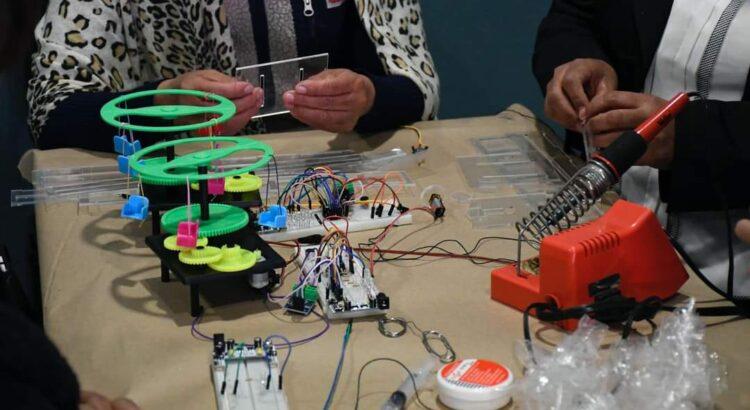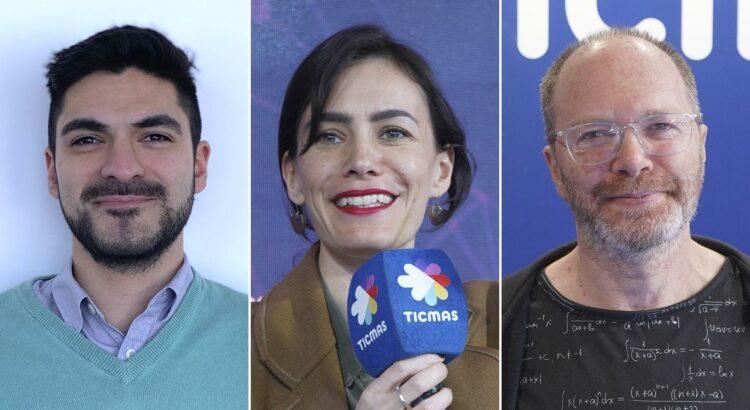By Carmela Salzano, researcher
Millions of children around the world still face complex barriers to quality education. This blog explores how communities and organizations are enlisting the collective intelligence and collaborative capacities of the ‘crowd’ to overcome stubborn challenges to learning. With the SDG clock ticking, could crowdsourcing accelerate progress?
At the Transforming Education Summit in 2022, the consensus was clear: we need to reimagine education systems through game-changing ideas, bold policies and actions, and radical collaboration. Could crowdsourcing be one such game-changer? A growing body of evidence, briefly explored in this blog, points to how the ingenuity and creativity of the ‘crowd’ are being harnessed to overcome complex pedagogical, technical, and infrastructure constraints to learning, particularly in low-resource contexts.
What do we mean by crowdsourcing?
“The crowd is more than wise — it’s talented, creative, and stunningly productive”
— Jeff Howe, Wired Magazine
The term crowdsourcing was first coined in 2006 by the journalist Jeff Howe in his article for WIRED magazine What is crowdsourcing? Howe highlighted the value of outsourcing tasks, traditionally performed by company employees and specialists, to large and undefined crowds of people through an open call, usually over the Internet. The diversity of the crowd’s expertise, skills, and experience, he felt, would offer far greater value, and a more diverse pool of solutions, than any single person.
In the years since, crowdsourcing has become a vital component of companies’ innovation and organizational strategy. With the rise of Web 2.0 and 3.0 technologies, businesses, experts, non-experts and communities collaborate more effectively, and on a much larger scale than ever before.
Companies regularly canvass customers’ ideas for new products and services, solicit the crowd for software and product development, or seek external expertise for micro-tasks. Open innovation challenges on platforms such as OpenIDEO and HeroX also support global businesses, governments, and public sector organizations in crowdsourcing ideas on issues areas ranging from greening industry to global health and food security.
Why does any of this matter for education?
Education systems in low-resource countries face complex and interconnecting challenges that cannot be solved easily, or quickly, through traditional top-down policy routes or financing mechanisms. Communities and education programming that have intentionally sought out solutions through the power of the crowd demonstrate how aspects of crowdsourcing, carefully targeted, can become fast and powerful tools for overcoming resource constraints, empowering and enhancing the quality of the education offer.
Funding: Crowdfunding is a well-established practice in schools in middle- and high-income countries. School leaders, teachers, and educators regularly appeal to supporters through platforms such as JustGiving, Crowdfunder, and DonorsChoose to overcome budget constraints for classroom supplies and materials, or for outings and sports activities. There is evidence of this practice now taking hold in the Global South. In Rwanda (Wellspring), Uganda and Zambia (PEAS) successful crowdfunding campaigns have been run to improve educational facilities.
Learning resources: Lack of access to textbooks, lesson plans and other support tools is a serious barrier to learning in low-resource communities. Organizations such as Khan Academy and World Education, through its CrowdED Learning Initiative, have put crowdsourced education content (or open education resources) at the heart of their mission. The Khan Academy model draws on a highly regarded ‘crowd’ of subject experts and business leaders from around the world to create a vast repository of online and offline content.
Responsive learning design: Crowdsourced learning design systems, exemplified by projects in HundrED’s 2024 Global Collection, including LiveBook, SwaTaleem’s ‘A village approach to girls’ education’ and the Life Skills Collaborative, propose a more participative way of meeting the needs of communities with complex socio-cultural barriers to learning. These innovations build on dialogue with communities to identify their most urgent needs and preferences first, then appeal to broad networks of pedagogic experts and developer communities for their ideas on contextually and culturally appropriate solutions. The non-profit Hello World has also put the crowdsourcing mindset to work in addressing connectivity, education and energy-related problems in isolated and vulnerable communities.
Access to higher education: Massive Open Online Courses (MOOCs) crowdsource resources to revolutionize access to higher education through a range of online platforms and credentialing opportunities. Certain MOOC platforms, such as EdX, incorporate suggestions from their user base to further improve functionalities and features.
Open innovation: Higher education and research institutions have recognized the value of exposing students to different types of innovation challenges to test their problem solving, innovation and entrepreneurship skills. The annual Big Ideas Contest at UC Berkeley provides funding, support, and encouragement to interdisciplinary teams of UC Berkeley students who have ‘big ideas’. NASA’s International Space Apps Challenge is a global hackathon where teams of students, scientists, engineers and educators work together to solve engineering and space travel challenges using NASA’s open data.
Bold solutions can drive paradigm shifts
“We’re in an era where educators and learners have an opportunity to collaboratively rewrite the rulebook. As we face the challenges head-on, we continue to break boundaries, sparking innovations that push the limits of our collective intelligence”
— HeroX
Development agencies such as the UK Foreign, Commonwealth and Development Office and the United States Agency for International Development through its LearningLab have also begun to map AI powered crowdsourcing tools that could help them pinpoint needs and curate solutions more efficiently, as well as guide financial decision making and enhance the quality of service delivery. But the potential of crowdsourcing doesn’t stop with technology integration.
In the social impact space, Open Innovation Challenges led to philanthropic networks, such as Lever for Change, manage customized challenges on behalf of a diverse range of funders, leveraging over $1.7 billion in grants from leading foundations for high-impact, open-sourced solutions addressing racial inequity, gender inequality, empowerment and climate change.
But perhaps the true potential of crowdsourcing lies in its ability to radically shift power dynamics around problem-solving to the Global South. The Bill and Melinda Gates Foundation already leads the way in the area of global health. Its Grand Challenges programme, for example, consists of ‘open call grant requests’ which identify innovations with proven impact and the potential for scaling. Grand Challenges Africa and Grand Challenges India, in particular, anchor calls in networks of local researchers, policymakers, and funders with the knowledge to create, guide, and accelerate transformative solutions to global health and development inequity.
Looking ahead
As yet, and in spite of a growing body of evidence on the contribution of crowdsourcing to addressing complex education challenges, such practices continue to operate on the periphery of mainstream education thinking. There are still no established taxonomies. Nor has there been systematic documentation of practices. Consequently, innovation-driven insights that could be gleaned for school and system-level solutions go untapped.
The potential of directed initiatives such as Open Innovation Challenges to crowds of problem-solving educators, practitioners, researchers, NGOs and networks in the Global South should be explored. The collective capacity to respond to access, equity and gender equality in education ignited by the call-to-innovation of meta-networks such as TheSouthAlsoKnows or the Fito Network could be transformational.
The post The potential of crowdsourcing and open innovation to accelerate progress in education appeared first on World Education Blog.





















 Users Today : 191
Users Today : 191 Total Users : 35459786
Total Users : 35459786 Views Today : 351
Views Today : 351 Total views : 3418323
Total views : 3418323